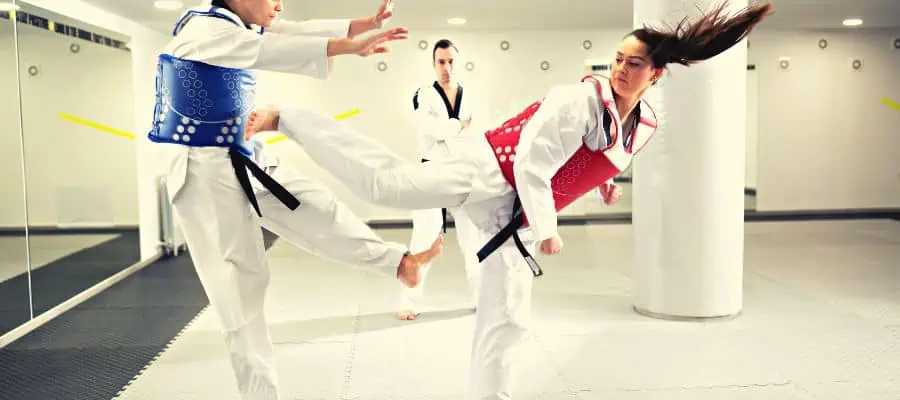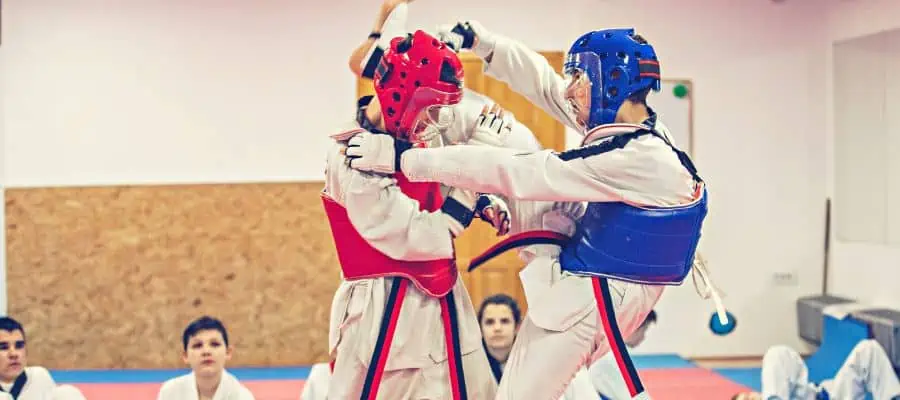Taekwondo, a Korean martial art, is renowned for emphasizing high-flying kicks and powerful strikes. For some, the idea of sparring or engaging in controlled fighting practice with a partner can be daunting. This brings us to a pivotal question many enthusiasts and beginners alike face: Is sparring an indispensable component of Taekwondo training?
Experts suggest that while sparring is a significant aspect of Taekwondo, offering practical experience and improvement in reaction times, it is not the sole method to learn and enjoy this martial art. Techniques and forms can be practiced and refined without sparring, catering to those seeking to avoid the physical confrontation of sparring sessions. However, the absence of sparring could limit a practitioner’s ability to apply techniques in a realistic self-defense scenario, as sparring provides a closer approximation of real-life encounters.
Individual preferences and goals thus play a crucial role in determining the necessity of sparring in one’s Taekwondo journey. Training can be tailored to improve fitness, master the form, or learn self-defense, and while sparring complements these goals, it is not the only path to proficiency in martial arts.
Fundamentals of Taekwondo Without Sparring

Practicing Taekwondo without sparring is possible and allows practitioners to focus on important aspects like technique, form, and fitness. Although sparring is critical in testing one’s abilities in a real-world scenario, many facets of Taekwondo training do not require sparring to improve self-defense skills, discipline, and mental fitness.
Techniques like kicks, punches, and blocks can be honed through shadow boxing and drills that mimic combat scenarios without physical contact. Training with equipment such as pads and bags allows students to practice their striking with full force while refining power and minimizing the risk of injuries. These exercises also boost one’s speed and energy levels, contributing to overall fitness.
Advancing in Taekwondo doesn’t solely rely on physical prowess; mental exercises focusing on confidence, focus, and courage are crucial. Students learn to address stress and improve progress through mental conditioning just as much as through physical training.
Respect for the dojang, instructors, and the learning process is emphasized with non-contact training. Students are taught commands and how to bow and practice proper etiquette—vital disciplines contributing to their progress.
| Skill Aspect | Training Method | Purpose |
|---|---|---|
| Technique | Shadow Boxing | Improves precision without partner |
| Form | Poomsae | Enhances pattern execution & balance |
| Fitness | Drills | Increases cardiovascular health & stamina |
| Mental | Breathing exercises | Develops focus & stress management |
| Strength | Strength training | Builds muscle for improved execution |
| Equipment | Bags & Pads | Allows safe practice of techniques |
Through these methods, a Taekwondo student can cultivate the same level of skill as those who spar, keeping the techniques realistic and effective for self-defense. This approach also ensures that those who may not want or be able to spar due to safety concerns can still fully participate in and benefit from Taekwondo.
Can You Actually Defend Yourself With Taekwondo?

Taekwondo is known for its high-flying kicks and striking techniques, but many wonder if it can be practical for self-defense. The answer lies in understanding that effective self-defense requires more than just technique—it involves awareness, timing, and the ability to apply skills under pressure.
Traditional Taekwondo includes forms, sparring, and self-defense techniques that can be adapted to real-world scenarios. Taekwondo can instill the confidence and skills necessary to defend oneself when trained properly.
| Aspect of Self-Defense | Relevance in Taekwondo |
|---|---|
| Awareness and Avoidance | Stressed in early training |
| Striking Techniques | Boasts a variety of powerful kicks and punches |
| Practical Application | Requires adaptation and training scenarios to be effective |
Beyond the high kicks and Poomsae (forms), Taekwondo practitioners also learn to react to sudden attacks and apply techniques that can neutralize threats.
- Effective self-defense incorporates:
- Distance control
- Timing
- Accurate striking
- Defense against grabs and holds
Practitioners who focus on these elements, and especially those who cross-train with other martial arts, may find that Taekwondo can be a valuable part of their self-defense repertoire. Additionally, sparring—though not always directly transferable to street defense—helps to develop reflexes, distancing, and the composure needed in a self-defense situation.
If this article was helpful to you, don’t forget to add it to your Pinterest board.
Recent Posts
What is Manachai's Fighting Style? Unveiling Muay Thai Mastery
Manachai, a celebrated figure in the Muay Thai world, has captivated audiences with his exemplary martial prowess. Hailing from the heartlands of Thailand, his name is synonymous with the art of...
What Was Chamuekpet Hapalang's Fighting Style? Unveiling Techniques
Chamuekpet Hapalang was a renowned figure in the world of Muay Thai (record 200-48-2), embodying a fusion of Muay Bouk and Muay Khao styles. Originating from Thailand, the art of Muay Thai is known...

